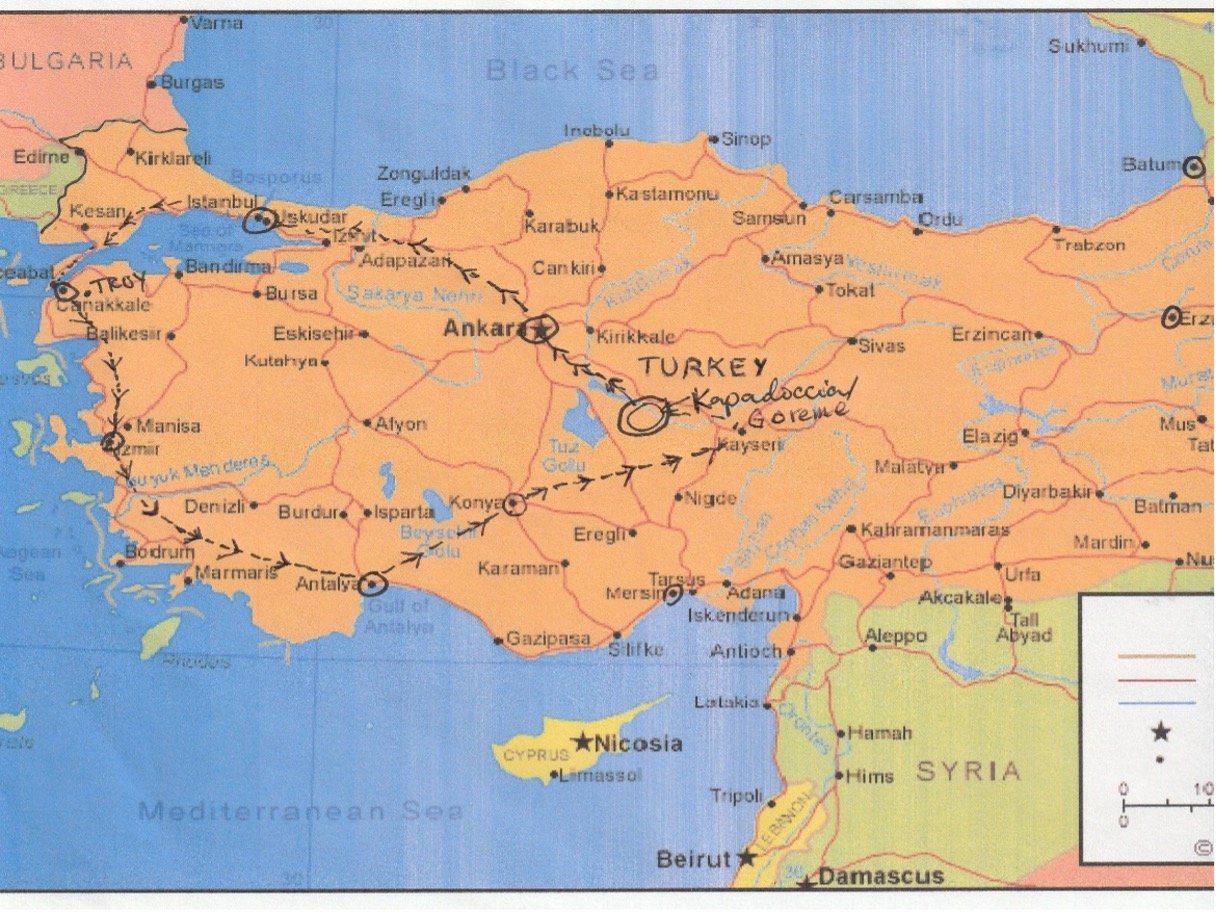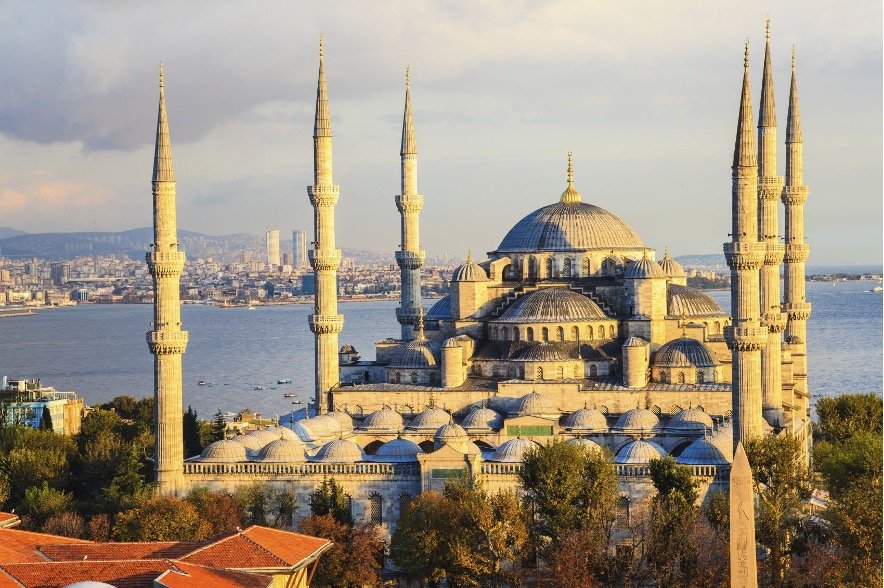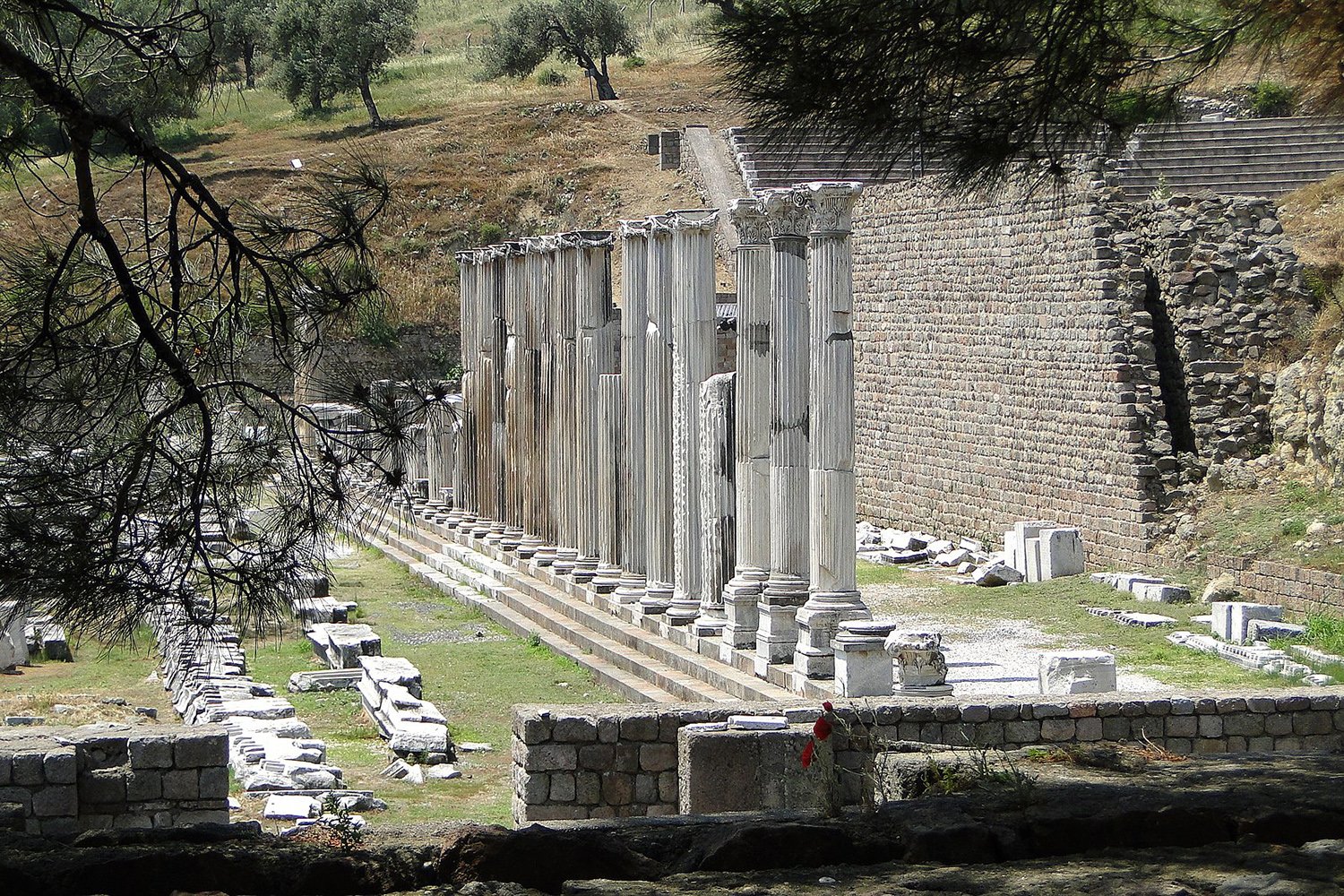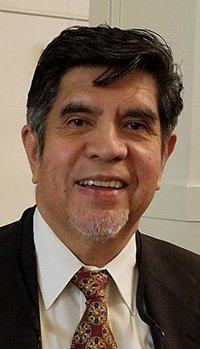Istanbul Was Constantinople
/My earliest awareness of a land called Turkey and wanting to visit there came from an old book of archeological excavations from a schoolteacher aunt of mine. This was a decrepit, scholarly tome, copyrighted 1915 or thereabouts. It was yellowed with age and falling apart at the binding.
A favorite section that aroused dreams of future exploration was the early discovery of the ruins of what was supposedly the legendary kingdom of Troy, by a German businessman named Heinrich Schliemann somewhere in Asia Minor.
Another travel inspiration was the classic 1964 film Topkapi, one of the tautest, stylish heist films ever made. It was about the theft of a bejeweled dagger from the Topkapi Museum in Istanbul, once the home of the Ottoman sultans.
Here’s the pivotal scene from that film:
(If the manner of the theft looks familiar, it’s because ir was the template for Tom Cruise’s own heist in the “Mission: Impossible 1” (1996) film of later years. What do they say? Imitation is the best form of flattery.)
So, when the portents aligned, I signed on for an intensive, immersive tour of Turkey. It was going to be my Ottoman holiday.
The 13-day itinerary of (usually) the “Classic” Türkiye guided coach tour—starting and ending in Istanbul. It made a big loop around the more interesting western half of the country. (●) were the overnight stops. (From the author’s collection)
And I was not disappointed.
The portal to Turkey is, of course, its most important city, Istanbul, which guards the Bosporus, the strategic waterway which is the gateway—or possible choke-point—depending on how the geopolitical winds are blowing—to the Black Sea, the home pond of the ports of Bulgaria, Ukraine, and of course, that other (nuclear) troublemaker, Muddah Russia.
Though beautifully situated on the Golden Horn, Istanbul’s location gave me an uneasy feeling that when the next global confrontation erupts, it is through that waterway that Russia’s Black Sea fleet and its unseen nuclear submarines (or what’s left of it or rebuilt) will enter or exit.
At the same time, I tried to feel the zeitgeist of the time. Turkey, with a population of 80 million, is a causeway of civilizations, a crossroads of conflicting cultures. Will it veer in the direction of an avowed, conservative Muslim society or continue to be a modern, secular, western-leaning nation whose people just happen to be Muslim?
Current President Recep Erdoğan, who was heading into his first term as prime minister at the time, was hard to read. He wanted to rule as a western statesman yet counted heavily on the support of the more conservative Muslim sectors of Turkish society. With many regimes falling one way or another in that part of the world, where will Turkey land politically among the major players of the region, alongside Egypt, Saudi Arabia and Iran?
While walking off a dinner near our hotel at Izmir, I had a random encounter with a middle-aged Turkish male. When our eyes locked, he asked me—I guess sensing that I was a visitor—”Are you religious?” Uh-oh. I knew where that was going. I quickly returned his off-putting entreaty with a quick “Yes. Why?,” and showing I was not going to take his bait, just quickly walked away.
In the meantime, the unique sights of the planet’s only Eurasian metropolis awaited: the Haga Sophia, Blue Mosque, Hippodrome, Istanbul Cistern, Spice Bazaar and, of course, Topkapi (Cannon Gate) Palace and Museum complex.
Since 1889, Istanbul has been the eastern terminus of the fabled Orient Express. It was still called Constantinople then; the name change occurred in 1930 when the written script switched from Arabic characters to Latin letters with many new hybrid letters.
The Haga Sophia, the world’s largest unsupported dome was built originally as a Christian church during the Byzantine empire, and then converted into a museum, then a mosque in the Ottoman period.
Stunning interior of the Haga Sophia, now a mosque-museum (c/o LMG3)
The sultans’ view of the Bosporus, one of the most strategic waterways of the world, cutting right through Istanbul, as seen from the promontory on which the Topkapi Palace sits (c/o LMG3).
One of the ornate ceremonial rooms at the Topkapi complex. Almost like the room where the main action of the Topkapi film took place. Note the various turquoise-shade decorative tiles. “Turquoise,” of course, is the French-inflected term for blue-green colors of the Turkish landscape and waters (c/o LMG3).
The spices and Turkish Delights at Istanbul’s Grand Bazaar (c/o LMG3).
In Istanbul’s Cistern, once the reservoir of Constantinople’s potable water supply, built during the Byzantine time, the upside-down visage of Medusa and sideways (background) were playfully added during the Cistern’s original construction in 532 AD under Roman Emperor Justinian. These were underwater until recently when the entire cistern was turned into a drier, more visitor-friendly site. The climax of Dan Brown’s novel, Inferno, takes place by this upside-down head of Medusa.
Heading for the Countryside
On the third day, we bade goodbye to teeming Istanbul and headed southwest, driving down the Dardanelles or the Strait of Gallipoli. We headed straight for Çanakkale, the seaside city which would be the jumping off point for the visit to Troy.
Troy was one of those fabled lands for me. My childhood imagination held it in higher stature than, say, El Dorado or Shangri-La, but on a par with Brigadoon! Of course, Hollywood had something to do with my juvenile, cock-eyed view of history and legend. The original 1956 film, Helen of Troy, still enthralls me as romantic storytelling for the ages.
A section of the ancient walls of Troy as they stand today (c/o LMG3)
Because of overlapping layers of civilization, many sites in Turkey are referred to by various names. For example, Troy was known as Wilusa in Hittite times—Ilios to the Homeric Greeks (hence, the Iliad / Ilium to the Latin Romans), then, Turkish Hisarlik in Ottoman times; and, finally, back to Troya in modern Turkish, in the late 19th-20th century when Heinrich Schliemann zeroed in on the site.
Until Schliemann was sure that he had found the true location of ancient Troy, it is hard to imagine that the site was once farmland partially and privately owned by a relatively minor diplomatic English family. The Calverts prospered with speculative real estate deals in the region. Schliemann, by the way, was an amateur archaeologist and despoiler. When he was done, what should have been his monumental discovery, ended up vandalized by him, intentionally or not.
As seen today, Troy is a lot smaller than I had imagined. Its fabled walls are really only about 12’-15’ high, if that. They would’ve been easily scalable by the Greeks’ ladders. Its battlements are also quite small as was supposedly the main gate where the Trojan Horse came through. Nonetheless, there I was treading the actual ramparts where Paris made love to Helen, at the whereabouts of doomed Trojan royal family--King Priam, Cassandra, Hector--and that nefarious Trojan Horse. I’ve always had a soft spot for the tragic Trojans over the invading but rightfully avenging Greeks.
I don’t know how Italian poet Dante conceived of his Inferno’s Nine Circles of Hell, but as of today, there are also “nine” acknowledged “overlapping cities” of ancient Wilusa. If the visit to Troy was all there was to this trip it would’ve been all worth it. But there were more wonders to behold.
The middle section of the trip included Ephesus, Izmir (supposedly the Turkish city with the most salubrious climate); some gigantic salt formation, a modern-day water resort where, for a small fee, you soak your feet in a foot of water, and these little fish ticklishly nibble away at the dead skin on your feet, and supposedly the home where the Virgin Mary spent her last days on earth. I thought the “fish” place was more memorable than overrated Ephesus, another set of well-preserved Roman ruins.
What was supposed to be the Virgin Mary’s last mortal home, outside Ephesus (c/o LMG3)
[Images Disclaimer: Sadly, most of my photos were lost when, after downloading them to my laptop, it inexplicably crashed. The lost images could possibly have been salvaged at a very steep price. Hence, the astute reader will notice that I’m using stock photos from the net or those lent by Lorenzo Ma. “Peewee” Guerrero III (LMG3) who recently did the Turkey trot. Many thanks to Peewee for lending me photos of the same sites I visited. Lesson learned: you can never have enough back-ups of your important files and precious photos. Arrange for back-ups of back-ups if you can.]
Because many of the historic sights on the eastern coast of Turkey are of the Hellenistic/Roman period, and because of the medical profession bent of my family, the visit to the remains of an ancient Roman hospital, an Asclepion, or early sanitorium, was of particular interest.
The ruins of an ancient Asclepion at Pergamon, outside Ephesus and Izmir (Photo by Adam Jones/Wikimedia Commons)
The Plains of Anatolia
Much of Turkey today comprises the central Asian plains called Anatolia, which was settled by the Hittites who were rivals of the ancient Egyptians and Babylonians. When Alexander the Great died, Anatolia was passed on to one of his generals, Seleucus I Nicator, who founded the Seleucid dynasty.
We have that ancient name to thank for the provenance of today’s more exotic breed of domestic animals: the Seluki/Saluki whippet comes from the Seleucid dynasty name. When the Tu-Kin (origin of the word “Turkey”) tribe of Mongolia invaded, the inhabitants became the Seljuks, then Turks. From the Ankara area in central Anatolia, came the Angora breed of cat.
Hot Air Balloons and Underground Cities
After Troy and Istanbul, the other region that excited me the most was Cappadocia (Kapadokya in Turkish) in the central part of the country. Cappadocia rose to fame when its unique geographical features stood in for the lunar landscape in the first Star Wars installment.
Typical, lunar-type Cappadocian landscape. The strange formations are nicknamed “fairy-chimney castles” by the natives (c/o LMG3).
The unique geographic formations that make up the Cappadocian landscape resulted from the jostling of the Asian and European continental plates when land masses were being formed. It’s the eastern (Asian) part of the country that is more susceptible to angry earthquakes.
Cappadocia ripened for large-scale tourism with hot-air balloons and foot-step visits to the numerous underground cities that sheltered early Christian tribes in the face of raiders like the heathen Mongols and Huns.
Each morning, an armada of tourist hot-air balloons ascends over Cappadocia.
If you haven’t gone on a hot-air balloon ride before, better be prepared to rise early. Wakeup call is 4:30 a.m. You have a light breakfast. Pick up is at the hotel around 5:30 a.m. As the sun starts to rise, you assemble at your designated departure field around 6:00 a.m.
You watch as your balloon is inflated, pile into the gondola and take off around 6:20 a.m. You float over the breath-taking landscape for over two hours, depending on wind condition, and finally descend around 9:00 a.m. before it gets too hot and the winds get too strong. All the while, there are unending photo opps! You are treated to a champagne toast upon returning to terra firma.
I forget how much I paid for it, but it wasn’t too expensive. There’s nothing quite like a hot-air balloon ride, and the experience has stayed with me through the years.
The underground “cities” protected the locals from marauding tribes. They were carved out of solid rock. The locals stayed down there with their animals and livestock for a few weeks. Recently, they have discovered “towns” as deep as eight stories down. Recommended unless you are claustrophobic.
Hotel Rooms as Large as Ballrooms
One particularly memorable aspect of the trip was the quality of the hotel rooms I was given: five-star quality rooms for what was essentially a four-star tourist-price package tour).
At Antalya, one of the two major cities that comprise the Turkish Riviera, I was floored by being given the largest hotel room I have ever stayed in.
In Ankara, I was given probably the most luxurious hotel room I never purposely booked in my life (below). This was at the Swissotel in a quiet, nondescript but bourgeois neighborhood in the capital. It was also the only hotel on our tour that offered facecloths (considering that Turkey prides itself on being a major producer of cotton towels) and the only one to offer bacon (!) in the Muslim country for breakfast! Thankfully, there were no religious demonstrations going on anywhere near the hotel!
Approaching Its Centennial as a Republic
In its never-ending quest to be considered a 21st century secular European-style society, Turkey has pursued the following developments:
• Just as the Chinese Communist Party foisted Beijing instead of Peking (which I think still goes better with “duck”) on the rest of the world, Erdogan’s government signaled to the world in 2022 that his country is now to be spelled and pronounced the French way -- “Türkiye” (toor-ke-ye) the only country name using the dieresis ( ¨ ) and not to be confused with Torquay and Kanye. Take that, ye unschooled British sailors (who were responsible for most of the mangled geographic names on today’s maps).
• This year also marks the 100th anniversary of Türkiye as a secular democracy. It was in 1923 when Kamel Ataturk threw off the medieval yoke of the Ottoman sultans and pushed his country towards 20th century modernization.
Souvenirs of Türkiye
Aside from the memories, how can one not visit such a fascinating land of contrasts without taking home a few mementoes. Here are some I picked up:
What trip to Turkey would be complete for a man without a fez (hat)? Frame on right is a gold-leaf illumination (reproduction) from a Koran interpretation of the Annunciation, the visit of the archangel Gabriel to the Virgin Mary informing her of her pregnancy with the child Jesus.
The author, an Ottoman sultan for a day!
If you want “exotic” while still staying in spacious four- or five-star hotels, savoring somewhat bland cuisine and truly unique and historic sights, then I highly recommend a Türkiye tour. Most importantly, do it while the religious-political situation in Türkiye is still relatively calm and the fundamentalist mullahs have not taken over yet.
Finally, did you know that the tulip originated from central Türkiye? I didn’t. It’s the enterprising citizens of the water-logged Netherlands who cultivated, commercialized and adopted it as another Dutch symbol. Turquoise tulips, anyone?
SOURCES:
Lorenzo Maria Guerrero III for additional photos
Microsoft Bing Travel - Türkiye
Myles A. Garcia is a Correspondent and regular contributor to www.positivelyfilipino.com. He has written three books:
· Secrets of the Olympic Ceremonies (latest edition, 2021);
· Thirty Years Later . . . Catching Up with the Marcos-Era Crimes (© 2016); and
· Of Adobo, Apple Pie, and Schnitzel With Noodles (© 2018)—all available in paperback from amazon.com (Australia, USA, Canada, UK and Europe).
Myles is also a member of the International Society of Olympic Historians, contributing to the ISOH Journal, and pursuing dramatic writing lately. For any enquiries: razor323@gmail.com
More articles from Myles A. Garcia





















